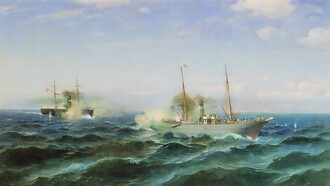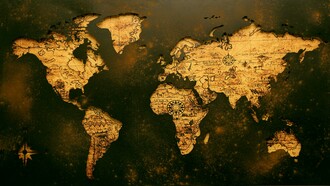Most of America’s wars have been fought by those without the money or power to avoid military service. The Civil War is a dark example of the influence of class and ultimately racism upon the outcome of the conflict.
The Civil War has been characterized as “a rich man’s war and a poor man’s fight.” Poor farmers and just plain folks in the South were antagonistic toward the elite planters and the war itself. It has even been suggested that the Confederacy lost the war because of the number of Confederate desertions. Class resentment as portrayed in the movie The Free State of Jones presented a realistic picture of the feelings of many plain non-slave-holding whites.
Class issues played heavily in feelings about and support for the war. The planter elites had privileges that protected them from actual combat, even while the war protected their interests as slaveholders. By the beginning of the Civil War, wealth was concentrated in the hands of a very few. Those at the top of the economic scales were the wealthy planters and other businessmen who benefited especially from the cotton industry; at the bottom were yeoman farmers and poor whites.
As had been the concern of the power elite during the Colonial Period, fear of lower classes of whites encouraged strategic decisions; this time it manifested in secession from the Union. It was felt by those in power that controlling the lower classes might be easier and slavery more secure in a confederacy of slaveholding states.
Two practices that fueled class resentment and undermined the elite’s control over poor whites were military inscription and the confiscation of personal property, or impressment. While wealthy planters continued to plant cotton, small farmers grew food stuffs and bore the brunt of impressment. What was considered most unfair was that planters who owned twenty or more slaves were excused from the draft. Poor men were forced to fight when in April, 1862, the Confederate Congress passed a military conscription act.
Still unconvinced, poor men deserted in great numbers, their rallying cry, “It is a rich man’s war.” By 1864, Jefferson Davis had to admit that “two-thirds” of the fighting men were absent. The resentment toward the planter elite and the war was so intense that deserters formed guerilla bands or gangs and attacked government supply trains, burned bridges, and even raided plantations.
The much-touted Civil War was not the total coming together of the southern people to fight for a noble cause but an active class conflict. But the planter elite did not give up. The old strategy, race, came into direct play again. In order to insure compliance, racist fears were the mechanism used to get plain folks to fight against their own interests. It worked.
The fear of loss of status, of being no better than the enslaved was engrained in the minds of plain and poor whites in the Confederate states. If slavery ended, poor whites were convinced that blacks would be their equals and they would no longer be superior. This need to feel superior, a belief in white supremacy, encouraged those with no self-interest to delude themselves that they had a stake in preserving the slave system. The yeoman farmers and poor whites were convinced that if the slaves were freed, they would suffer more than the planters, in that they would have to compete with the blacks economically and much worse, freed blacks would claim social equality with them.
This threat to white racist pride could not go unchallenged. After the loss of the war, poor whites, still impoverished but in great fear of social equality, remained devoted to the racial caste system, fueled on by the wealthy of the South.
This fear of the loss of racial status remains as potent today as it was during the Civil War era and not only among poor whites. The myth of white supremacy and the racial pride it produces is part of the collective identity and esteem of many white Americans. As all of America faces the “browning” of America, the loss of white majority status and possibly power, these fears take hold and exhibit in more open ways in “post-racial America.”
Many Americans, including white Americans, voted for Barack Obama to become President of the United States, but the black face in the White House brought on old fears of loss of racial status and the privilege of whiteness. Many white Americans today, through more outward acts of prejudice and racism, are exhibiting the same fears as those yeomen farmers and poor whites more than 150 years ago.
How long will the myth of white supremacy bind white Americans?
What will enable them to release the fears of loss of superiority?
What is the worse thing that a white individual could experience or endure if blacks and browns had equal social status in America?
How would America look, feel, and be if equal social status were a reality in America?















